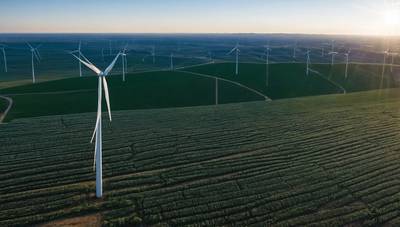Solar and wind farms will be scrutinized more closely by USDA, but some projects may still continue
According to a release, the U.S. Department of Agriculture announced on Tuesday that it would increase scrutiny of certain solar and wind energy projects. However, they did not end all support from their agency for clean energy projects in U.S. farmland. The announcement came a day following an announcement by Agriculture Secretary Brooke Rollins on X about her agency's decision to stop funding wind and solar projects on productive farmland.
The agency's Tuesday press release stated that it would no longer fund larger renewable energy projects.
The USDA has announced that wind and solar projects are not eligible for its Rural Development Business and Industry Guaranteed Loan Program. Ground-mounted solar systems with a capacity of more than 50 kilowatts and any system without a history of energy consumption will also not qualify for Rural Energy for America Program Guaranteed Loan Program.
The release stated that "USDA will make sure that American farmers and ranchers who use wind and solar power will install the right size units for their facility."
In a press release, USDA said that it would not fund projects using solar panels "manufactured" by foreign enemies.
The USDA didn't immediately answer questions about whether smaller projects still qualify for agency funding.
Thomas Clark, director, marketing and communications, for Northstone Solar, a solar installation company in Whitefish Montana, stated that potential clients had been affected by USDA's withdrawal of project funding.
Clark explained that "if you're trying to install a ground-mount system on farmland - which was not an issue a few years ago - now they won't allow it to happen." "It seems that you are punishing farmers who are trying to diversify their income and stay in business."
Rollins stated in the release, that solar farms have displaced prime farmland and the new investment safeguards are intended to keep farmland accessible. USDA data shows that only a small portion of rural land has been used for wind and solar projects, and the majority continues to be used in agriculture even after projects have been installed. (Reporting and editing by Mark Porter in Washington, Leah Douglas reported from Washington)
(source: Reuters)




